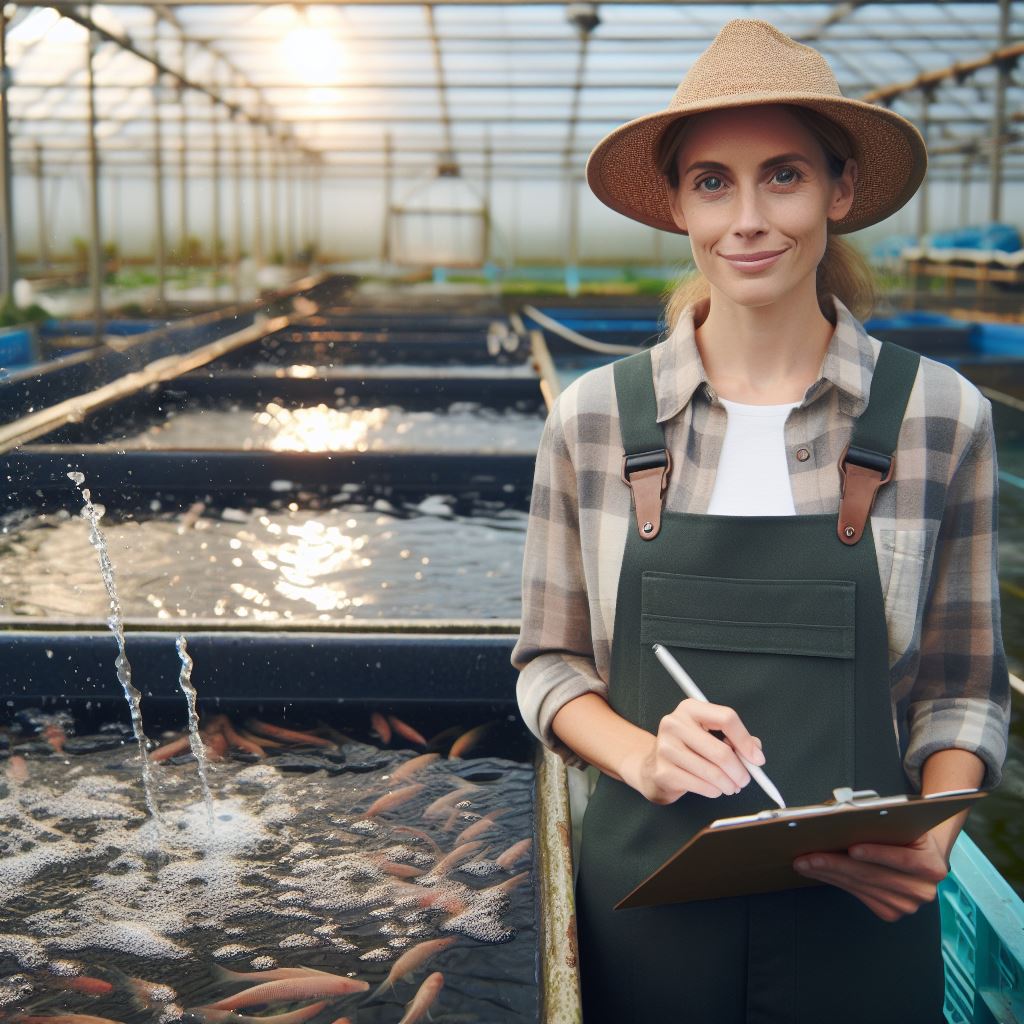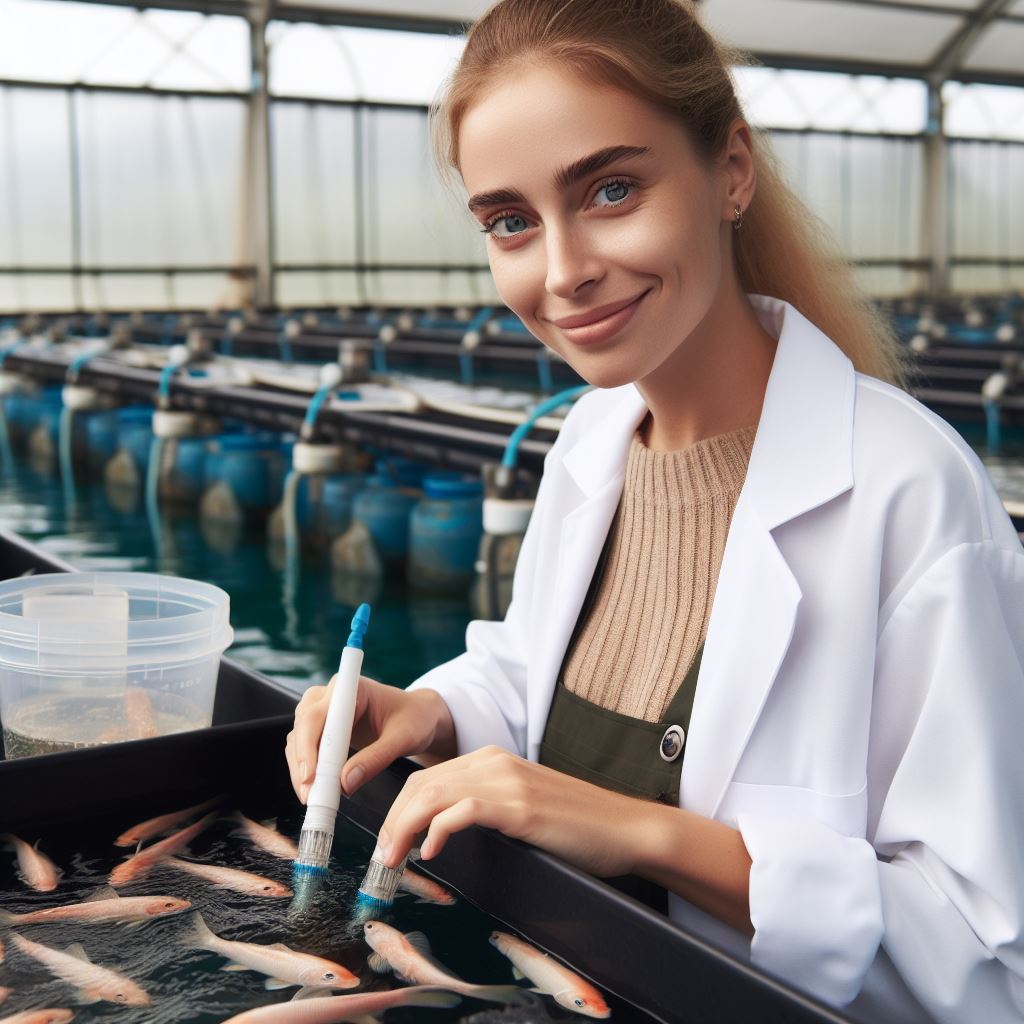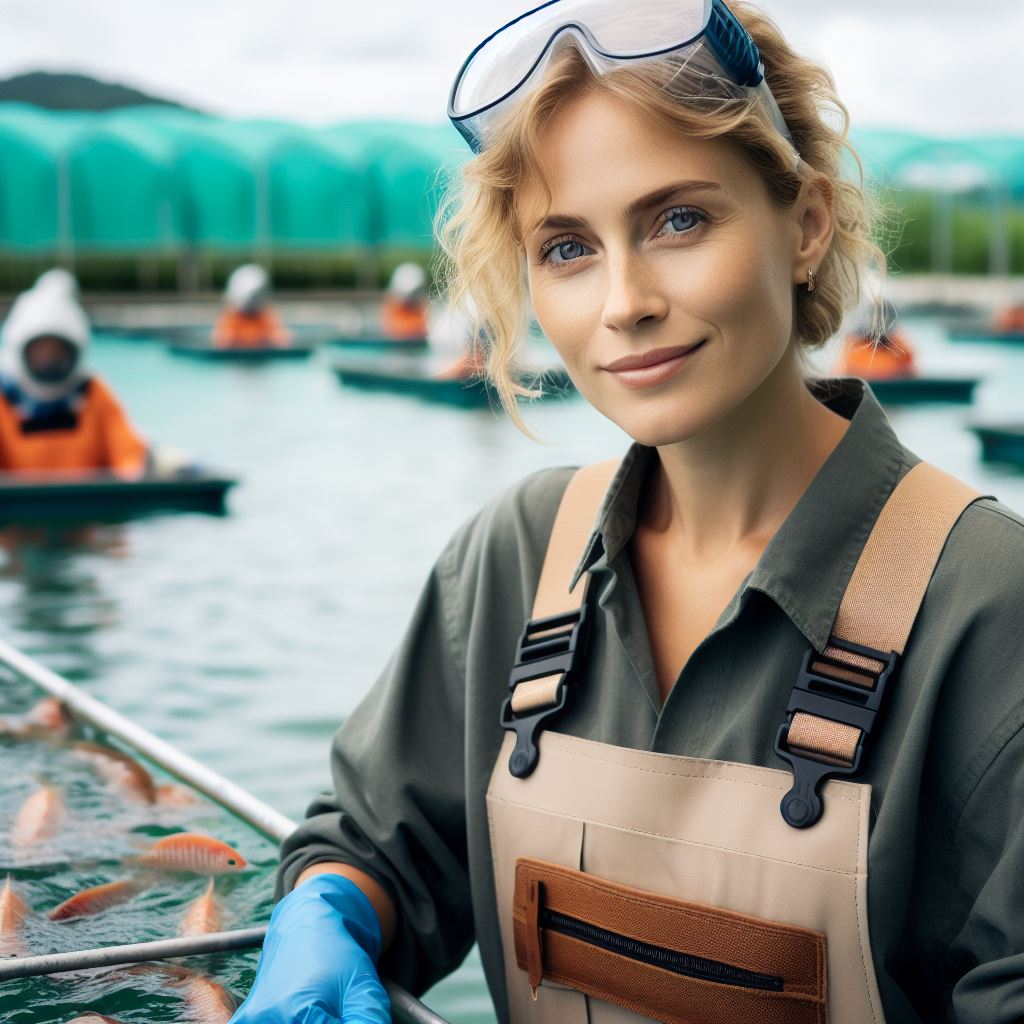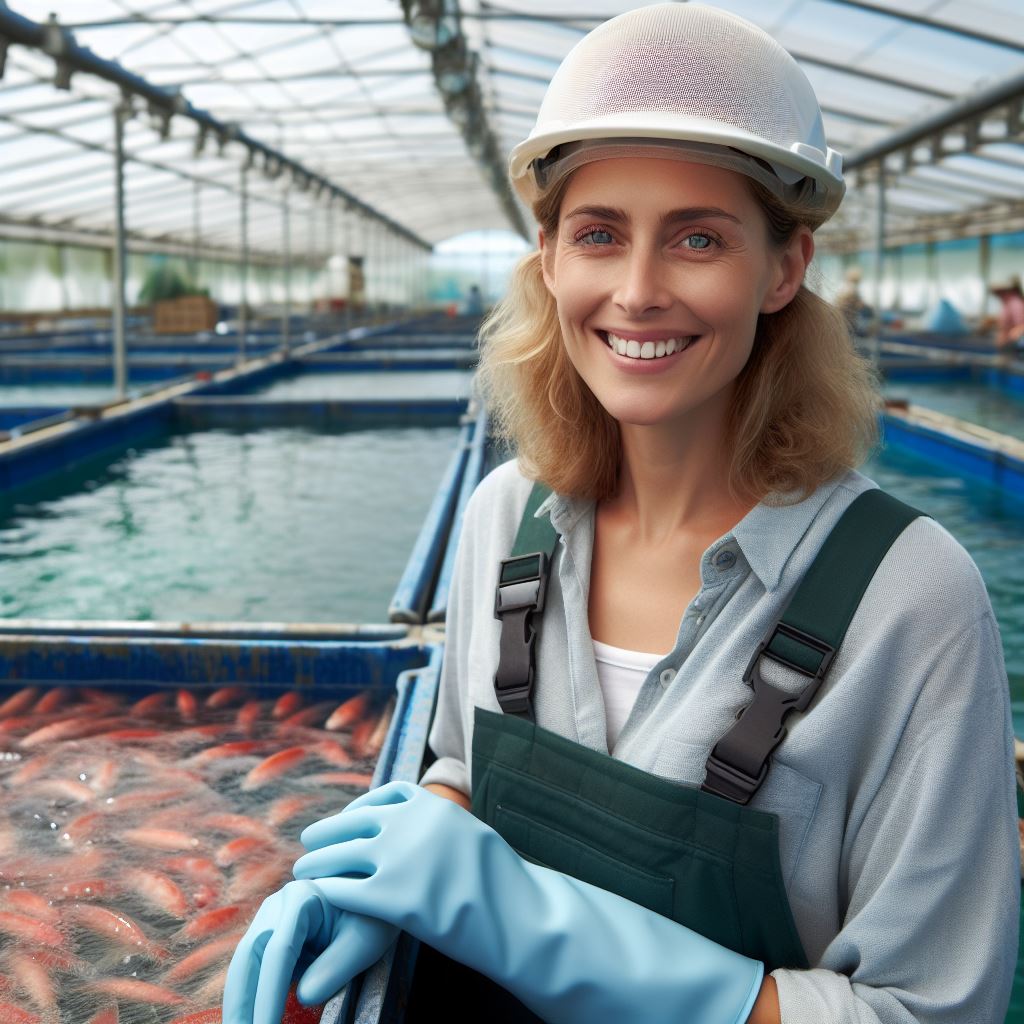Introduction
Aquaculture, the farming of fish and other aquatic organisms, plays a crucial role in the UK. With declining wild fish stocks and increasing global demand for seafood, aquaculture ensures a sustainable supply.
Aquaculture techs play a significant role in this industry by developing innovative solutions that address the top 5 challenges faced by UK aquaculture.
These challenges include environmental impact, water quality management, fish health and welfare, feed sustainability, and technological advancements.
In the next section, we will explore each challenge and discuss how aquaculture techs are addressing them. Stay tuned for insightful solutions to boost the UK aquaculture industry.
Environmental Sustainability
- Minimizing environmental impact is crucial for aquaculture operations to ensure long-term sustainability.
- Maintaining water quality poses a significant challenge as it directly affects the health of the aquatic ecosystem.
- Preventing pollution is essential to protect the surrounding environment and maintain the balance of aquatic life.
- Sustainable practices, such as reducing waste, are necessary to minimize the ecological footprint of aquaculture techs.
- Minimizing the carbon footprint is vital to mitigate the industry’s contribution to climate change.
Disease Management
Vulnerability of aquaculture to diseases
Aquaculture is highly vulnerable to diseases due to the high stocking densities in these systems.
Diseases and their impacts on fish health and production
Common diseases have significant impacts on fish health and production, causing economic losses for farmers.
Preventing and controlling diseases in aquaculture systems pose various challenges for UK Aquaculture Techs.
- High Stocking Densities: The close proximity of fish in aquaculture systems increases the risk of disease spread.
- Pathogen Transmission: Diseases can easily be transmitted through water, equipment, or contaminated feed in crowded fish farms.
- Multispecies Environment: Aquaculture systems often rear multiple species together, increasing the complexity of disease prevention and control.
- Limited Treatment Options: Effective and approved treatments for aquaculture diseases are limited, making disease management challenging.
- Antibiotic Resistance: Overuse of antibiotics in aquaculture can lead to antibiotic resistance, reducing the effectiveness of treatments.
Diseases such as viral, bacterial, and parasitic infections can have severe impacts on fish health and production.
Viral infections like viral hemorrhagic septicemia (VHS) and infectious salmon anemia (ISA) can cause high mortality rates.
Bacterial infections like furunculosis and vibriosis can result in decreased fish growth, lower production, and increased mortalities.
Parasitic infections, such as sea lice infestations, can cause skin and gill damage, leading to reduced fish health and growth.
Preventing and controlling diseases in aquaculture systems
Preventing and controlling diseases in aquaculture systems require strict biosecurity measures and disease monitoring.
Biosecurity involves implementing measures like quarantine, proper disinfection protocols, and controlling fish movements.
Disease monitoring includes regular health checks, early detection of diseases, and efficient diagnostic methods.
However, several challenges make disease prevention and control difficult for UK Aquaculture Techs.
Personalized UK Career Consulting
Receive tailored career guidance designed just for you. Get actionable steps and expert support to boost your career in 1-3 days. Take control of your career now.
Get Started- Lack of Early Warning Systems: The absence of efficient early warning systems for diseases makes timely intervention challenging.
- Limited Disease Surveillance: Monitoring diseases in all fish populations can be resource-intensive and laborious, leading to potential gaps in surveillance.
- Conflicting Regulations: Navigating through complex and conflicting regulations for diseases and treatment options creates difficulties for aquaculture techs.
- Environmental Factors: Factors like water quality, temperature, and stress can increase the susceptibility of fish to diseases.
- Farm Management Practices: Inadequate farm management practices, such as poor water filtration or overcrowding, can contribute to disease outbreaks.
To overcome these challenges, UK Aquaculture Techs must invest in research, innovation, and collaboration.
Developing efficient early warning systems and disease surveillance methods can enhance disease management.
Collaboration between industry, regulators, and researchers can help create disease management strategies tailored to the UK aquaculture sector.
Investing in the development of effective treatments and vaccines for aquaculture diseases is crucial for long-term sustainability.
Overall, disease management remains a significant challenge for UK Aquaculture Techs, requiring continuous efforts and advancements in technology.
Read: Day in the Life of a UK Aquaculture Technician
Water Management
Importance of efficient water use and conservation
Efficient water use and conservation are crucial for the success of UK aquaculture technics. Maintaining optimum water conditions for fish growth poses several challenges.
To address these challenges, various methods for monitoring and controlling water quality are available.
Water is a limited resource, and its scarcity makes it essential to use it efficiently in aquaculture operations.
Efficient water use not only reduces costs but also minimizes the environmental impact of fish farming. Every drop counts, and therefore, implementing water-saving strategies is vital.
Conserving water is equally important in aquaculture. Techniques such as recirculating aquaculture systems (RAS) help minimize water wastage by continuously recycling and filtering water.
RAS technologies provide sustainable solutions for maintaining a healthy water balance in fish farms.
Maintaining optimum water conditions is critical for fish growth and overall health. Fish require specific water temperatures, oxygen levels, and pH ranges for optimal development.
Failure to maintain these conditions can result in reduced growth rates, increased mortality, and susceptibility to diseases.
Your Dream Job Starts with a Perfect CV
Get a tailored CV and cover letter that captures your unique strengths and stands out in your industry. Let us help you make an unforgettable first impression.
Get StartedMaintaining optimum water conditions for fish growth
One of the biggest challenges in water management is controlling water temperature. Fish are ectothermic, meaning they rely on the surrounding water temperature to regulate their body temperature.
Fluctuations in temperature can lead to stress and a weakened immune system, making fish more susceptible to infections.
Incorporating reliable temperature control systems is essential to provide a stable environment for the fish.
Monitoring and controlling water quality
Monitoring water quality plays a vital role in aquatic systems. Regular assessment of parameters such as dissolved oxygen, pH, ammonia, and nitrate levels helps ensure optimal conditions for fish.
Continuous monitoring can be achieved through automated sensors that provide real-time data on water quality.
Maintaining proper water filtration is crucial for removing waste and contaminants.
Filtration systems such as mechanical filters, biological filters, and UV sterilizers aid in maintaining water clarity and quality.
These filtration methods remove harmful substances, providing a clean and healthy environment for the fish.
Regular water testing is essential to detect any deviations from the desired water parameters.
Water samples can be sent to laboratories for analysis, or on-site testing kits can be used for quick assessments.
Monitoring water quality allows early identification of potential issues and enables prompt corrective measures.
Water circulation also plays a vital role in aquaculture. Proper water movement helps distribute essential nutrients, oxygen, and removes waste products.
Installing efficient water circulation systems ensures a well-mixed and oxygenated environment, promoting fish growth and health.
Controlling waterborne diseases is another challenge in aquaculture. Fish can be susceptible to various bacterial, viral, and parasitic infections.
Optimize Your LinkedIn for Success
Boost your LinkedIn profile with a professional bio, keyword-rich headline, and strategic recommendations that attract recruiters. Stand out from the crowd and get noticed.
Optimize NowUV sterilization, ozone treatment, and chemical disinfection prevent disease spread. Biosecurity and quarantine measures further minimize risks.
Ultimately, efficient water use and conservation are crucial for UK aquaculture technics.
Maintaining optimum water conditions for fish growth involves various challenges, including controlling water temperature, monitoring water quality, and preventing diseases.
It is essential to implement effective water management strategies to ensure the sustainability and success of the aquaculture industry in the UK
Read: UK Aquaculture: Salary & Career Outlook 2024
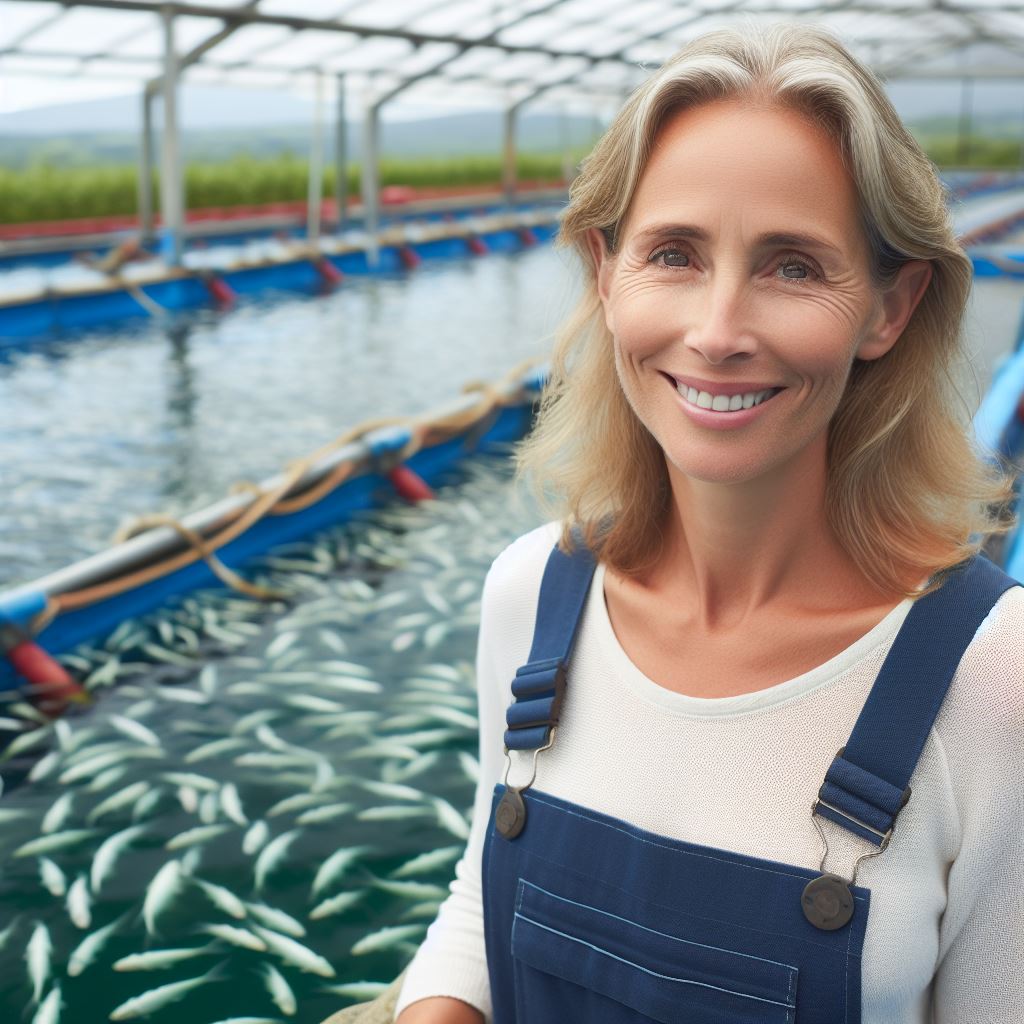
Technology Integration
In recent years, technological advancements have revolutionized the field of aquaculture, offering new possibilities and solutions to various challenges.
However, integrating these new technologies into existing systems is not without its own set of hurdles.
Exploring Technological Advancements
The aquaculture industry has undergone significant transformations with the introduction of advanced technologies.
These advancements have improved efficiency, sustainability, and profitability in fish farming processes.
- Smart Monitoring Systems: Technological progress enables smart monitoring systems to actively track fish health by measuring water quality, oxygen levels, and vital parameters.
- Automated Feeding Systems: Improved feeding systems can dispense precise amounts of feed, optimizing nutrition for fish while reducing waste and operational costs.
- Data Analytics: Integration of data analytics helps in predictive modeling, disease prevention, and decision-making, allowing farmers to run more efficient operations.
- Remote Sensing: The use of drones and satellites provides farmers with real-time data on water conditions, helping in remote monitoring and addressing potential issues promptly.
- Recirculating Aquaculture Systems (RAS): RAS involves closed-loop systems that recycle and purify water, reducing the environmental impact and improving fish health.
Challenges of Adopting New Technologies
While the potential benefits of new technologies are evident, the adoption and implementation of these advancements come with their own set of challenges.
- Cost and Infrastructure: Integrating advanced technologies often requires substantial upfront investments for equipment, infrastructure, and software systems.
- Technical Expertise: Operating and maintaining hi-tech systems demand specialized skills and knowledge, which may be lacking in the existing workforce.
- Resistance to Change: Traditional methods and practices may be deeply ingrained in the aquaculture industry, making it difficult to embrace new technologies.
- Compatibility Issues: Integrating new technologies into existing systems can be complex, requiring compatibility with current infrastructure and processes.
- Risk Assessment: Before adopting a new technology, thorough risk assessment should be conducted to evaluate potential drawbacks and mitigate associated risks.
Continuous Training and Education
To overcome the challenges of technology integration, continuous training and education play a crucial role in preparing aquaculture techs for the future.
- Ensuring Technical Competency: Regular training programs should be provided to aquaculture techs to develop the necessary skills to operate and maintain advanced systems.
- Updating Knowledge Base: As technology evolves, aquaculture techs must stay updated with the latest advancements and industry best practices.
- Facilitating Collaboration: Training platforms and workshops promote knowledge sharing, collaboration, and innovation among techs in the aquaculture industry.
- Promoting Research and Development: Continuous education encourages techs to participate in research and development initiatives, driving further innovations in the field.
- Addressing Workforce Shortages: Training programs can help combat the skill shortages in the aquaculture industry by attracting new talent and upskilling existing workers.
Essentially, technology integration in aquaculture has presented numerous benefits, but the path to adoption is not without obstacles.
Exploring tech advances, acknowledging challenges, and investing in education empower aquaculture techs to unlock innovation’s full potential for industry sustainability and prosperity.
Read: Aquaculture in the UK: Education Pathways
Regulatory Compliance
Adhering to government regulations and standards
Adhering to government regulations and standards is of utmost importance in the field of aquaculture techs. These regulations are in place to ensure the safety and sustainability of the industry.
Complying with complex and evolving regulations
Complying with complex and evolving regulations can be a significant challenge for aquaculture techs.
The regulatory landscape is constantly changing, with new policies and guidelines being introduced regularly.
Aquaculture techs in ensuring regulatory compliance
Aquaculture techs must continually monitor and adapt to regulatory changes, ensuring strict compliance for operational integrity.
Non-compliance entails severe consequences, such as legal issues, fines, or operational suspension or closure.
These techs act as crucial intermediaries, interpreting and correctly implementing regulations within their operations.
Responsibilities include maintaining precise records, conducting regular audits, and making necessary modifications as required.
Challenges arise from the intricate nature of regulations across different countries and regions, demanding a deep understanding and adept navigation.
Techs operating in multiple jurisdictions find compliance overwhelming due to diverse requirements.
Keeping up with dynamic regulations, often subject to changes and updates, poses an additional challenge for aquaculture techs.
The evolving nature of aquaculture technology introduces a lag in regulatory development, leaving techs in a grey area.
To surmount this, techs must proactively engage with regulatory authorities, contributing expertise to shape practical and effective regulations.
Collaboration with research institutions, industry associations, and stakeholders facilitates knowledge exchange and best practices.
In essence, regulatory compliance stands as a significant challenge for aquaculture techs, necessitating active participation and collaboration for industry safety and sustainability.
Read: Sustainable Practices in UK Aquaculture Tech
Conclusion
In closing, UK aquaculture techs face several challenges in their industry.
These challenges include limited access to funding, regulatory barriers, disease management, environmental impact, and lack of skilled labor.
Aquaculture techs play a crucial role in overcoming these challenges.
They develop innovative solutions to optimize production, enhance disease prevention and control, minimize environmental impacts, and train a skilled workforce.
Despite these challenges, the future of UK aquaculture looks promising. With increased investment and support, the industry has the potential for significant growth and innovation.
Aquaculture techs will continue to contribute to sustainable and efficient production systems, ensuring a steady supply of high-quality seafood and reducing the strain on wild fish populations.
Overall, the challenges faced by UK aquaculture techs highlight the need for collaboration between the government, industry, and research institutions.
By addressing these challenges, the UK can become a leader in aquaculture technology, driving economic growth and ensuring food security while taking care of the environment.
[E-Book for Sale]
500 Cutting-Edge Tech Startup Ideas for 2024 & 2025: Innovate, Create, Dominate
$19.99 • 500 Tech Startup Ideas • 62 pages
You will get inspired with 500 innovative tech startup ideas for 2024 and 2025, complete with concise descriptions to help you kickstart your entrepreneurial journey in AI, Blockchain, IoT, Fintech, and AR/VR.

